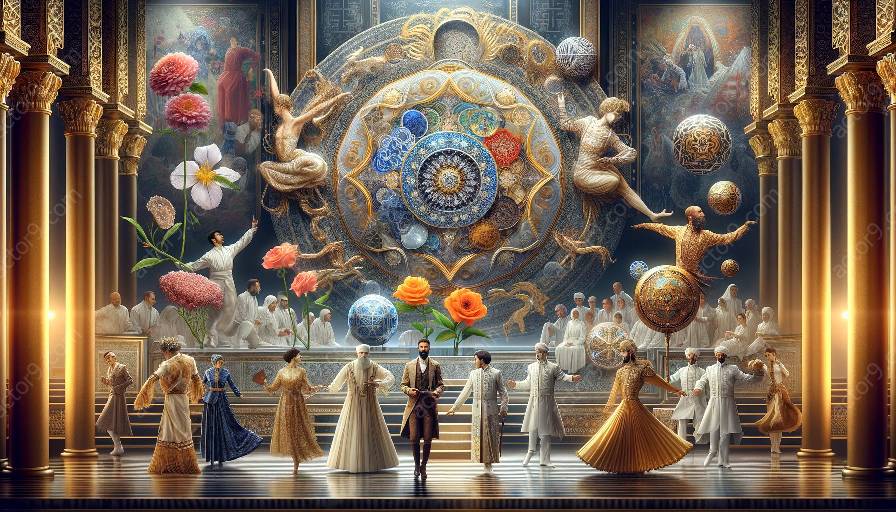Circus arts have a rich history deeply intertwined with cultural influences. One fascinating aspect of this intersection is the role of cultural symbolism in shaping the music and soundscapes of circus acts.
The Influence of Cultural Symbolism
Cultural symbolism encompasses a wide range of elements, including traditional music, instruments, rhythms, and thematic motifs that hold significance within specific cultures. When it comes to circus acts, these cultural symbols are often woven into the music and soundscapes, creating a multi-layered sensory experience for the audience.
For example, in traditional Chinese circus performances, the sound of the erhu, a two-stringed bowed musical instrument, is often used to evoke a sense of history and tradition. The melancholic yet captivating melodies of the erhu not only add an auditory dimension to the performance but also serve as a nod to the rich cultural heritage of China.
Soundscapes and Theatrical Elements
Music and soundscapes play a crucial role in setting the atmosphere and emotional tone of circus acts. The use of cultural symbolism in these auditory elements can transport audiences to different corners of the world, providing a window into diverse cultural narratives.
Consider the vibrant rhythms and melodies of Brazilian samba music, often integrated into circus acts featuring acrobatic and energetic performances. The pulsating beats and infectious energy of samba music infuse the performance with the spirit of Brazilian carnival, offering a glimpse into the exuberant cultural celebrations of Brazil.
The Power of Cultural Cross-Pollination
Furthermore, circus acts often present a melting pot of cultures, where artists from various backgrounds come together to create breathtaking spectacles. This cultural diversity is echoed in the music and soundscapes of circus acts, reflecting a fusion of traditions, instruments, and musical styles from around the globe.
One striking example is found in the incorporation of Spanish flamenco music and its passionate, rhythmic guitar and percussive handclaps into circus performances. The intertwining of flamenco sounds with acrobatic displays showcases the magic of cultural cross-pollination, where diverse influences meld harmoniously to captivate audiences.
Embodying Cultural Narratives
Beyond mere accompaniment, the music and soundscapes of circus acts serve as storytellers in their own right, conveying cultural narratives and evoking emotional landscapes. Through carefully selected sounds and melodies, circus performances become immersive journeys that reflect the cultural roots and identities of the artists and their acts.
Japanese taiko drumming, with its thunderous beats and commanding presence, is often utilized in circus acts to embody strength, discipline, and the spirit of ancient Japanese traditions. The resounding echoes of the taiko drums serve as a testament to the enduring cultural legacy of Japan, intertwining with the physical prowess of the performers to create a powerful narrative that resonates with audiences.
The Evolution of Circus Music
As circus arts continue to evolve, so too does the music and soundscapes that accompany them. While traditional cultural elements remain integral, contemporary circus acts often blend these with modern musical genres and technologies, resulting in innovative auditory experiences that bridge past and present, tradition and innovation.
Electronic music, for instance, has found its place in the sonic landscape of circus acts, infusing performances with pulsating beats, futuristic sounds, and immersive sonic environments. The juxtaposition of electronic elements with cultural symbolism showcases the dynamic nature of circus music, embracing change while retaining a deep respect for cultural roots.
Conclusion
The intersection of cultural symbolism with the music and soundscapes of circus acts is a captivating tapestry that weaves together traditions, narratives, and sonic experiences. By understanding the influence of cultural elements in circus arts through the lens of music and sound, we gain insight into the interconnectedness of diverse cultures and the power of music to transcend boundaries in the enchanting world of circus performances.


































